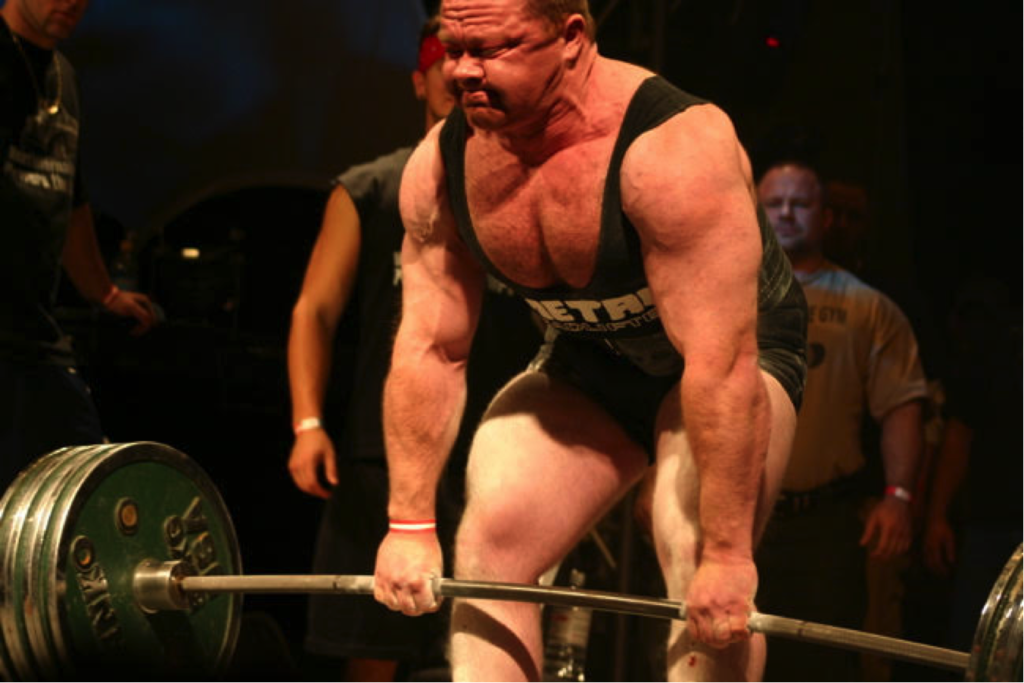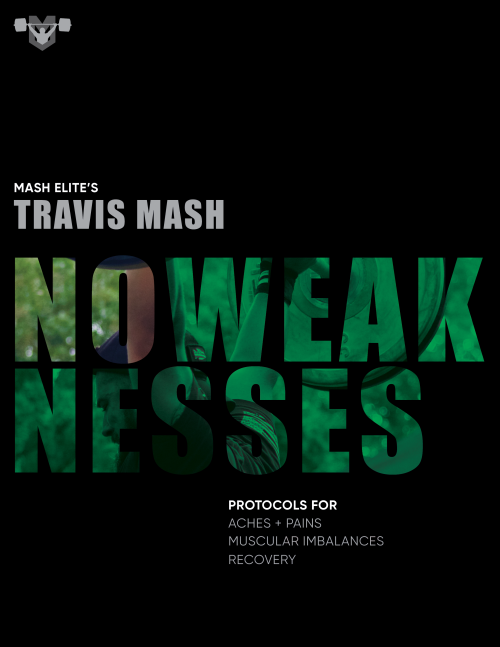Check out the “Mash Squat Every Day” E-Book with 4 twelve week programs for weightlifting, powerlifting, super total, and bodybuilding. Find out more below:
Whether you want to lose weight, gain weight, or get jacked, check out the “Mash Eat What You Want Program” for all of your Nutrition needs. Check it out today at the link below:
==> The Mash Eat What You Want Program
Don’t Avoid the Pain
A lot of us are programmed to avoid anything that’s painful. For example sumo deadlifts are very painful for me due to my severely damaged hips. Well they were painful. If a naturally functional movement like sumo deadlifts are painful, that’s a problem. If I avoid that pain performing all of my movements with a close stance, it’s only going to get worse.
Let me start by saying that I am not a doctor. If your pain is unmanageable, then go see a doctor. Personally I recommend finding a soft tissue practitioner as soon as possible if you are serious about training. You want to make sure that you shop around and find someone that is already working with athletes. A good chiropractor or PT can help lead the charge against pain.
Pain can be the body’s way of alerting you that there is a problem. Whether it be stability, inflammation, or an injury, you need to address the issue. I have met several athletes lately that simply stop doing certain movements. I have news for you. Avoiding an area due to pain will not make it better.
I’ve had my hips x-rayed, and I have been working with some amazing practitioners for a long time now. With that being said, I know exactly what’s wrong with my hips. All the big squats have damaged them, and now they are arthritic. What’s the best medicine for my hips? Movement and strength work will open up the hips and increase blood flow to the area.
A couple of weeks ago I started the process of targeting my hips. I am using sumo deadlifts, unilateral RDLs, and unilateral farmers walks to get my hips healthy again. I picked all three of these exercises because all three are weak compared to the rest of the movements that I perform.
I use a muscular imbalance chart that Malcolm Moses-Hampton and I designed for our new book “No Weaknesses” to determine the areas that I suck the most. Here’s an example:
Right now I can conventional deadlift 650lb, but I could only sumo deadlift 419lb. In an ideal world the conventional deadlift and sumo deadlift should be equal, so you can see that my ratio is way off. I want to also mention that the 419lb deadlift was the most painful thing that I have felt in a long time.
Three weeks later I sumo deadlifted 510lb pain free. I will stand by the following statement: “the best way to mobilize a joint is with weight.” I used the sumo deadlift to open up my hips and stabilize the joint all at the same time. Yesterday one of my athletes, Frank Volrath, commented on the improvement of my feet width during the catch of a snatch. That comment pleased me more than any other accolade that I could receive within the gym.
How was this accomplished? I increased the frequency of the sumo deadlift to three times per week. I didn’t go heavy every time. I followed medium-low-high intensity wave. One key that I learned from Zach Greenwald is to check your range of motion while training. When the ROM is shortened, that’s an indicator of stress in the body. Rest until the ROM returns to normal, and then perform the next set. If it doesn’t return, it’s time to call it for the day. This is a great way to be objective towards optimal volume. Zach uses a basic toe tough to judge ROM.
I used the unilateral carries and RDLs to promote proper movement of the hips. Weightlifters and powerlifters perform 95% of their movements bilaterally, which can cause the hips to move less than optimally. The quadratus lumborum can quickly become a problem area. Those two little muscles are designed to lift the hips up and down. If they aren’t used, they can become dormant and weak. A weak muscle is a muscle susceptible to injury.
I have known athletes to avoid movements like the front squat because they found that the front squat hurt their back. So what are the steps to take:
1. See a practitioner to make sure there are no tears or major injuries going on.
2. Figure out why the front squats are hurting you: bad mechanics, a weakness, or something else?
3. Target those weaknesses or mechanics.
4. Use tempo to limit load and strengthen positions like a 5 second eccentric and 5 second concentric.
5. Constantly check ROM to avoid damage.
These steps are good for all athletes. Everything that I am saying goes for weightlifters, powerlifters, and all athletes. This is the very reason that Bulgarian training is not a good idea. Trust me, I believe that Bulgarian training is a great way to increase the total weight used on any lift. However if you perform Bulgarian training in its purest form, you will avoid the accessory movements necessary for overall functional movement. Unless you are that one in a million genetic freak, this is a recipe for injury.
I hope that you guys will be able to use our upcoming book “No Weaknesses” to quantify your strengths and weaknesses. The book was designed to be a tool to help athletes develop a plan to strengthen the body as one unit. It’s a tool to avoid ending up with terrible hips like mine. It’s a book that I wish I had read when I was a young man.
If you guys and gals want to learn more about “No Weaknesses”, sign up for the newsletter and receive a FREE E-Book “The Big Six”. Check it out below:
Sign up for the Mash Newsletter and FREE E-Book “The Big Six”
Join Team Mash Mafia for weightlifting, powerlifting, athletic performance, bodybuilding, running, or a hybrid approach. This team is already taking over weightlifting, and I plan on taking over all of the other disciplines one at a time. Check it out below:
Remember on September 17th-18th we will be hosting the Mash Barbell Picnic” on the Farm. Weightlifting Day 1 and Powerlifting Day 2, but more importantly hanging out together the entire weekend. Check it out below:

